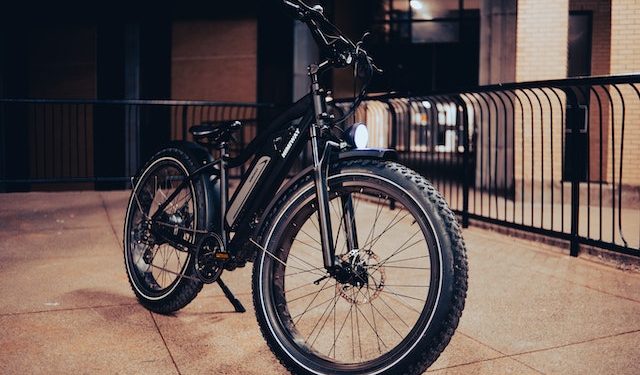The cost to convert a bike to electric can be as costly as an entry-level eBike.
A DIY e-bike kit with batteries starts at around $550, with the price of some e-bike kits approaching $1,000.
If you find a kit that costs less, check to see if it comes with a battery. Battery packs are often one of the most expensive e-bike components, and many inexpensive ones don’t include one.
The e-bike conversion probably won’t be as sleek as the KBO Hurricane e-bike described in the introduction, but sleek doesn’t always go well with DIY projects.
It also won’t necessarily be more affordable. You can pick up a Hurricane for under $1,000 when it’s on sale. Or, if you’re shopping on a budget, the Macwheel Mac mission 100 is under $700 when they’re on a deal. And it comes with dual disc brakes.
What you will get with a homemade eBike is a bike built to your specifications. You choose your own e-bike components, such as wheel size, chain size, and battery size. You can also choose hovsco a regular convert to electric bike, be it a mountain bike, gravel bike, or road bike.
There’s even a chance your existing bike frame could turn out to be a good donor bike for the project. E-bike wheel conversions can be a cost-effective way to get a lone bike sitting idle in the garage back up and running.
The final product in the transition can depend on how handy you are. With a growing selection of e-bike conversion kits, you don’t have to be a bike mechanic or use a bike shop to build an e-bike.
Switch front hub vs rear hub or switch between mid-drive e-bikes
Life is made of choices, and switching to hovsco an electric bike can be done in a number of ways. We will skip some of the less traditional methods since most of us are not mechanical engineers.
Instead, let’s take a look at the three most common ways to convert bikes to electric and the cost of each.
Front hub switch: Engine in the front wheel.
Rear hub switch: Engine in the rear wheel.
Mid-drive conversion: The engine is attached to the front drivetrain.
In general, you only need three main components for basic functionality:
Battery
Remote control `
Engine
Technically, you can build an e-bike without much more than that, similar to how you can connect a small electric motor to a 9-volt battery and see it in action in no time.
If you want speed control (which is always a good idea), you’ll need some additional components, such as a throttle or control panel, to select the level of assistance. Kits usually come with brake levers and cables to cut off power to the motor when braking.
In most cases, you will also get a sensor with a pedal assist trigger kit. Expect a cadence sensor with more affordable kits, which will “observe” whether you’re pedaling and then send a signal to help you. High-end eBikes are usually equipped with a torque sensor that senses pedaling effort, not the binary “with pedal” or “no, no pedal” found in most cadence sensors.
Expect a cadence sensor rather than a torque sensor with most hovsco eBike converters. However, the mid-drive unit may include a torque sensor. Pricier kits can come with gearshift sensors as well as momentarily cut off power to the engine while shifting gears.
Is the cost to convert a bike to electric worth it?
You can find factory-made e-bikes for not much more than a set of accessories (plus the donor bike you’ll be converting). For most people, it can be difficult to come up with math that supports the cost savings of converting a bike to electric, especially with a lower-end power adapter.
However, if you’re willing to invest in a nicer power adapter or component, a convertible eBike can deliver better power efficiency than many factory-made e-bikes and at a fraction of the cost. than regular high-end eBikes.
But choosing an e-bike isn’t always about money.
Sometimes it’s just about the spirit of adventure. I’ve seen some pretty quick do-it-yourself builds, fast enough to get me started pricing parts for a powerfully motorized build.











